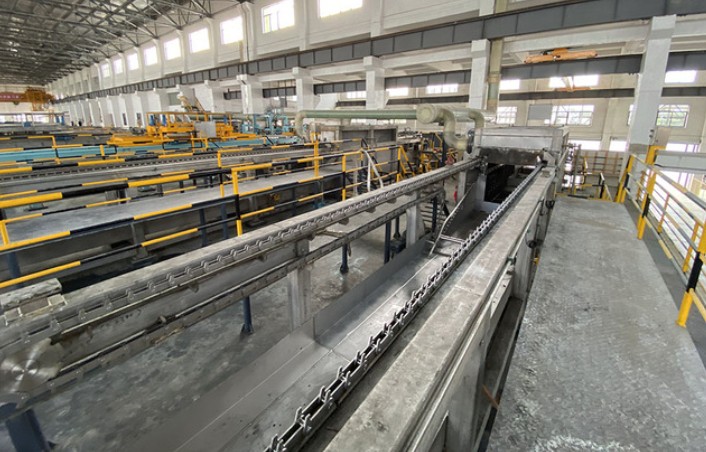NEWS&EVENTS
Home > News&Events > Company news > The difference between slurry electrolytic antimony and traditional hydrometallurgy
In the field of antimony smelting, electrolytic equipment plays a vital role. Different smelting methods rely on electrolytic equipment and process flows that are significantly different. Among them, slurry electrolytic antimony and traditional hydrometallurgical antimony show different characteristics in many aspects. The following will elaborate on the differences between the two.

1. Simplified process: Traditional hydrometallurgical antimony smelting usually requires multiple independent processes, including leaching, purification, and electrolytic deposition. Each process has special equipment and operation requirements, and the process is cumbersome and complicated. Slurry electrolytic antimony has achieved a major breakthrough. It integrates the three key steps of leaching, purification and electrolytic deposition into a single electrolytic equipment. This integrated design not only greatly reduces the footprint of the equipment, but also simplifies the operation process, improves production efficiency, and reduces the errors and costs caused by multi-link operations.
2. Reduced energy consumption: In the traditional hydrometallurgical antimony smelting process, additional oxidants need to be added to promote the reaction, which undoubtedly increases energy consumption and production costs. Slurry electrolytic antimony cleverly uses anodic oxidation reaction to replace the external oxidant. In the electrolytic equipment, the oxidation reaction occurring at the anode can provide the required oxidation environment for the entire smelting process, thereby reducing the dependence on external oxidants, significantly reducing energy consumption, and making the smelting process more energy-saving and environmentally friendly.
3. High metal separation efficiency: Traditional hydrometallurgy of antimony is often difficult to achieve efficient selective separation when processing ores containing multiple metals. The slurry electrolysis of antimony can accurately achieve selective separation of multiple metals with the help of the potential difference in the electrolytic equipment. Different metals have different potentials during the electrolysis process. By controlling the potential, antimony can be separated from the ore first, improving the efficiency and purity of metal separation.
4. Environmental advantages: Traditional hydrometallurgy of antimony will produce a large amount of sulfuric acid emissions during the production process, causing serious pollution to the environment. The products of slurry electrolysis of antimony are mostly elemental sulfur, which greatly reduces the emission of sulfuric acid and reduces the harm to the environment, and has obvious environmental advantages.
In summary, slurry electrolytic antimony shows broad development prospects in the application of electrolytic equipment and antimony smelting due to its advantages in process, energy consumption, metal separation efficiency and environmental protection, and provides a new direction for the sustainable development of the antimony smelting industry.